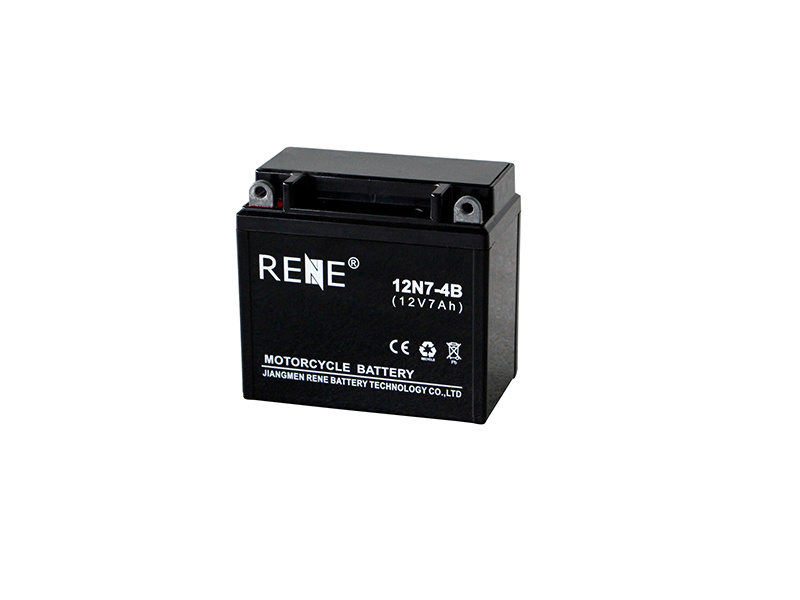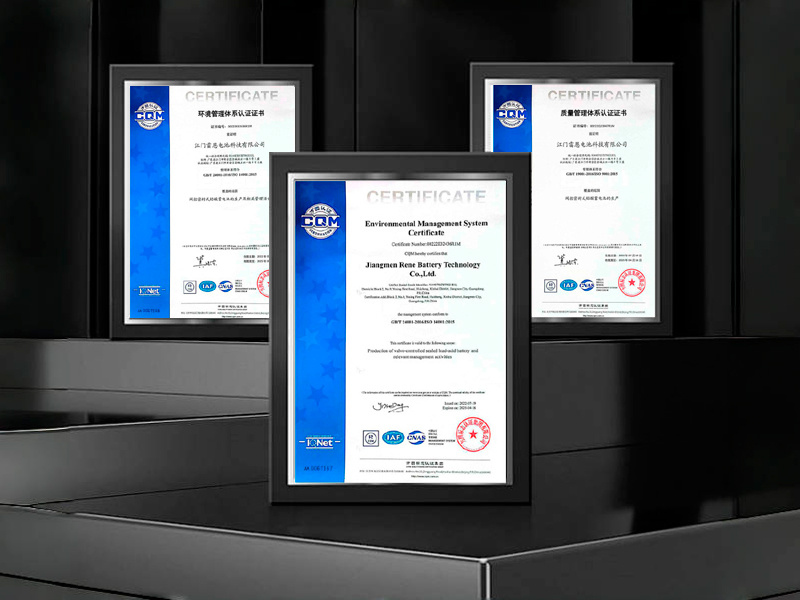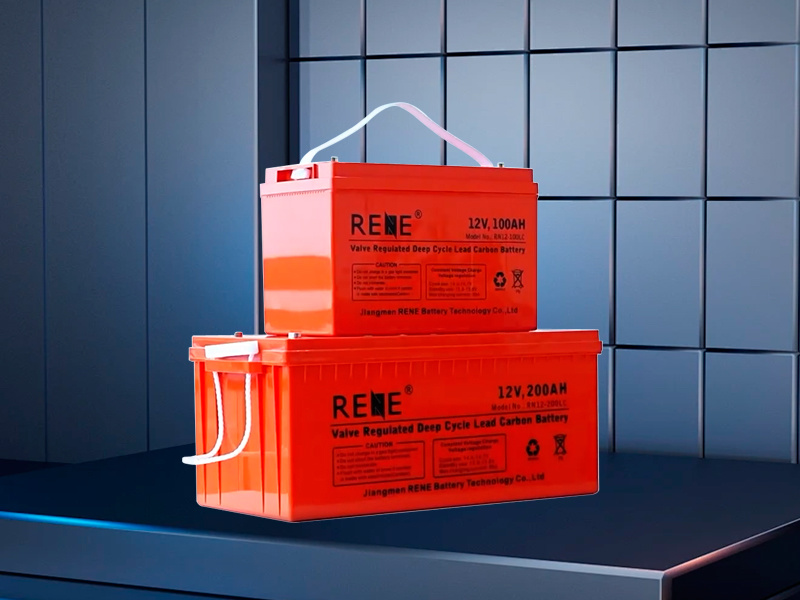Jiangmen Rene Battery Technology Co., Ltd.
Top 5 Features to Look for in the Best 4V Lead-Acid Battery
2025-05-07
Top 5 Features to Look for in the Best 4V Lead-Acid Battery Introduction to 4V Lead-Acid Batteries In the realm of automotive power solutions, **4V lead-acid batteries** stand out for their reliability and efficiency. These batteries are widely used in various applications, including **motorcycles, ATVs, and other small vehicles**. Understanding the key features that define a quality 4V lead-acid

Top 5 Features to Look for in the Best 4V Lead-Acid Battery
Introduction to 4V Lead-Acid Batteries
In the realm of automotive power solutions, **4V lead-acid batteries** stand out for their reliability and efficiency. These batteries are widely used in various applications, including **motorcycles, ATVs, and other small vehicles**. Understanding the key features that define a quality 4V lead-acid battery is crucial for ensuring longevity and optimal performance. In this article, we will delve into the top five features to consider when selecting the best 4V lead-acid battery for your needs.
Table of Contents
- 1. Battery Capacity and Performance
- 2. Durability and Construction Quality
- 3. Maintenance Requirements
- 4. Safety Features and Regulations
- 5. Warranty and Customer Support
- Frequently Asked Questions (FAQs)
- Conclusion
1. Battery Capacity and Performance
When selecting a 4V lead-acid battery, **capacity** and **performance** are paramount. Battery capacity, measured in amp-hours (Ah), indicates how much energy the battery can store and deliver over time. A higher capacity translates to longer usage between charges, which is especially crucial for vehicles that require consistent power for starts and operation.
In addition to capacity, the **performance** of a battery under various conditions should be taken into account. Look for batteries that can deliver high cold cranking amps (CCA), a measure of the battery's ability to start the engine in cold weather. A battery with a high CCA rating will provide more reliable starts, particularly in challenging conditions.
Furthermore, consider the **discharge rate**. A well-designed battery should maintain its voltage under load, which is essential for ensuring that electrical components function properly. A battery that can handle high discharge rates without significant voltage drop will provide a better overall performance.
2. Durability and Construction Quality
The durability of a 4V lead-acid battery is heavily influenced by its construction quality. Look for batteries that feature robust casings made from high-impact materials that can withstand vibrations and harsh environmental conditions. These batteries are often subjected to rough handling and extreme temperatures, so a strong casing will protect the internal components from damage.
Additionally, the quality of the lead plates inside the battery is critical. Batteries with thicker plates generally offer better performance and longer life. A thicker plate means more surface area for chemical reactions, providing better energy storage and discharge capabilities. This factor is particularly important for those who use their vehicles frequently or in high-demand situations.
3. Maintenance Requirements
Maintenance can be a deciding factor when choosing a 4V lead-acid battery. While some batteries are maintenance-free, others require periodic checks and maintenance to ensure optimal performance. If you opt for a battery that requires maintenance, consider how easy it is to access the cells for checking fluid levels and adding distilled water.
Maintenance-free batteries are designed to minimize user intervention. These batteries typically use absorbed glass mat (AGM) technology, which captures the electrolyte in a glass mat, reducing the risk of spillage and significantly lowering maintenance needs. If convenience and ease of use are important to you, a maintenance-free option may be the best choice.
4. Safety Features and Regulations
Safety is a non-negotiable aspect of battery selection, especially for lead-acid batteries, which can pose risks if not handled properly. Look for batteries that comply with industry safety standards, such as those set by the **Underwriters Laboratories (UL)** or **Society of Automotive Engineers (SAE)**. These certifications ensure that the battery meets specific safety and performance criteria.
In addition to compliance, consider safety features like **short-circuit protection**, **overcharge protection**, and **venting systems** that prevent gas buildup. Batteries equipped with these features are less likely to cause accidents or damage to your vehicle.
5. Warranty and Customer Support
A comprehensive warranty is indicative of a manufacturer’s confidence in their product. When choosing a 4V lead-acid battery, look for options that offer at least a **one-year warranty**, with some premium options offering extended warranties up to five years. A robust warranty not only protects your investment but also provides peace of mind.
In addition to warranty coverage, consider the level of customer support provided by the manufacturer. Responsive customer service can be invaluable if you encounter issues with your battery. Check online reviews and forums to gauge the experiences of other customers regarding the manufacturer's support.
Frequently Asked Questions (FAQs)
1. What applications are suitable for a 4V lead-acid battery?
4V lead-acid batteries are commonly used in motorcycles, ATVs, golf carts, and other small vehicles requiring reliable power sources.
2. How long can I expect a 4V lead-acid battery to last?
The lifespan of a 4V lead-acid battery varies, but with proper care and maintenance, you can expect it to last between 3 to 5 years.
3. Can I use a 4V lead-acid battery in extreme temperatures?
Yes, but performance may be affected. It's essential to choose a battery designed to handle extreme temperatures to ensure reliable performance.
4. How often should I check the fluid levels in a maintenance-required battery?
Check fluid levels every 1 to 3 months, or as recommended by the manufacturer. Maintaining proper electrolyte levels is crucial for battery health.
5. Are maintenance-free batteries worth the investment?
Yes, maintenance-free batteries often save time and effort, making them a worthwhile investment for those who prefer convenience and reliability.
Conclusion
Selecting the best 4V lead-acid battery involves careful consideration of several key features. By focusing on **battery capacity**, **durability**, **maintenance requirements**, **safety features**, and **warranty options**, you can make an informed decision that meets your power needs. The right battery will not only enhance your automotive experience but also ensure longevity and reliability in performance. With this comprehensive guide, you are now equipped to choose the perfect 4V lead-acid battery for your vehicle, ensuring optimal performance and peace of mind for years to come.
Key words:














